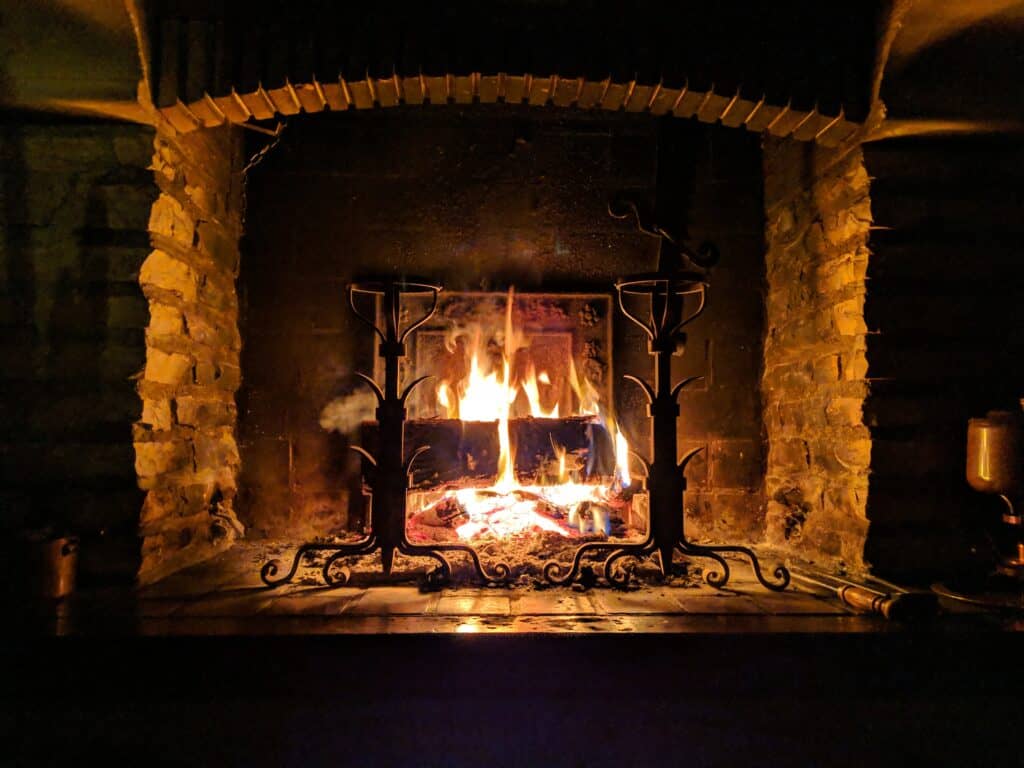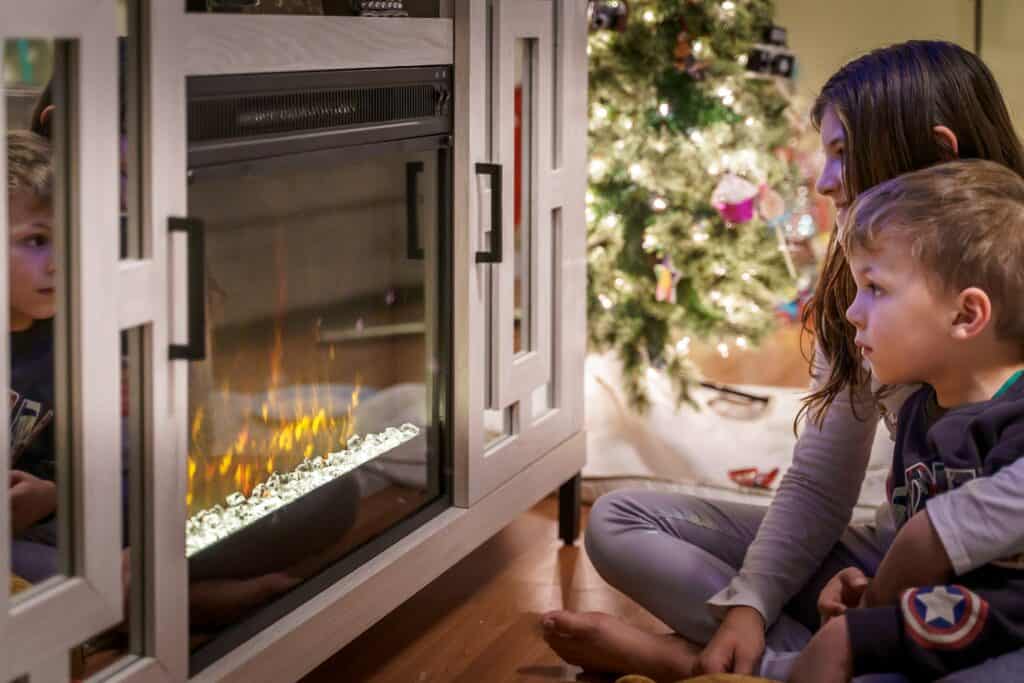Introduction – What Is A Supplemental Heat Source?
A supplemental heat source is popular as an additional means of heating your home. There are many different types of supplemental heat sources available, and each has its benefits and drawbacks. In this blog post, we will discuss the most common supplemental heat sources and help you decide which one is right for you.

Preface – Did You Maximize Insulation?
The reason we at ShrinkThatFootprint bring this up is because insulation is one of the few truly sustainable solutions to bring your home’s heating cost to near zero, or at least so low compared to a non-insulated house that it’s like being zero. The concept of such a construction, the Passivhaus, originated in Germany and contain within it the specifications that state such an insulated house is so resistant to loss of heat that its annual heating costs will not exceed 15 kWh. Given that the average household electricity consumption alone is 10,000 kWh, a real Passivhaus means a massive, 90% reduction in energy use.
Buying a passivhaus, or building a new one, is out of a question for most people. Where would we find the builders and where is the supply of such passihaus’s? But there’s a big space between a poorly insulated house and an optimized passivhaus. In between, regular homeowners can put in insulation in attics, crawl spaces, walls, and increase outdoor shades to reduce incoming heat. During the summer, a really insulated house will also maintain its low temperature because of the low energy exchange between interior and exterior. It’s not just for maintaining heat, it’s for maintaining cool as well.
We recommend that you spend your money to increase insulation. For regular insulation retrofit efforts, the EPA estimates that a homeowner will save 15% on energy costs. Given that energy costs are unstable and experience massive spikes for example during the Russian-Ukraine land conflict that’s seriously affected Europe, we believe excellent installation is going to have to be a solution in the future.
What Is A Supplemental Heat Source?
A supplemental heat source is an additional or backup heating system that can be used in case of an emergency or power outage. These heat sources can include anything from a wood-burning stove to a propane-powered generator. They are typically used in conjunction with the primary heating system, such as a furnace. These are often used in areas where power outages are common, such as during winter storms. As an alternative, supplemental heat sources are typically more expensive than the primary heating system, but they can be a lifesaver during emergencies.
How To Know If I Need A Supplemental Heat Source?
If you’re not sure whether or not you need a supplemental heat source, there are a few things you can do to determine if one is right for you.
- First, take a look at your energy bills from the past few months. If you notice that your energy bills have been steadily increasing, it may be time to invest in a supplemental heat source.
- Another way to tell if you need an additional heating system is to ask yourself how comfortable you are with your home’s current temperature. If you find yourself constantly adjusting the thermostat, it’s probably time to invest in a supplemental heat source.
- Lastly, take a look at your home’s insulation. If your home has poor insulation, it will be difficult for your primary heating system to keep up with the demand for heat, and a supplemental heat source will help to make your home more comfortable.
The Suitable Supplemental Heat Source For Your Home
Supplemental heat sources come in many different forms, and each has its own set of benefits and drawbacks. Here are a few of the most common supplemental heat sources:
1. Electric Space Heating
Electric space heaters are one of the most common supplemental heat sources. They are relatively inexpensive to purchase and operate, and they can be used to heat a small space quickly and efficiently. However, electric space heaters can be a fire hazard if they are not used properly, and they can also increase your electric bill significantly if used excessively. It turns out that electric resistive heaters are incredibly inefficient. They are almost the most inefficient way of heating a home, which might not matter if you have a home on solar and have excess electricity. For everyone else, almost any other system excepting oil furnaces, electricity remains at the bottom of the efficiency of heating appliances. The times when electricity make sense are when 1) the heating space is very small so it doesn’t matter as much that the space heater is small and inefficient, 2) you live in a type of dwelling that makes it very hard to switch away from the built-in electric heating.
2. Gas-fired Supplemental Heat Source
Gas-fired space heaters are another popular option for supplemental heating. Like electric space heaters, they are relatively inexpensive and can be used to heat a small space quickly. However, gas-fired space heaters require a source of fuel (usually propane or natural gas), and they produce harmful emissions when in use.

3. Wood-burning Stoves
Wood-burning stoves are a more traditional option for supplemental heating, but they are still popular in many homes today. These supplemental heat sources are generally very efficient and can provide a significant amount of heat, but they require a steady supply of wood fuel. In addition, wood-burning stoves generate harmful emissions when in use, so they should only be used in well-ventilated areas. However, on the flip side, wood is considered a “renewable energy source” because after the carbon emissions are released into the air, they’re absorbed back into plants unlike fossil fuels that are a net gain for carbon dioxide. Consider two types of wood burning stoves:
Fire wood-burners – feed with increasingly larger pieces of wood from kindling to logs.
Wood pellet burners – use small, compact wood pellets synthetically made.
4. Radiant Floor Heating
Radiant floor heating is a supplemental heat source that can be used to supplement your home’s existing heating system. It uses a network of pipes, usually made of plastic or metal, to circulate hot water or other fluid through your floor. The hot water is heated up by the action of the sun. The floors then radiate the heat back into the room, providing a consistent and comfortable level of warmth. Because radiant floor heating doesn’t rely on forced air, it can be an ideal solution for people with allergies or asthma who are sensitive to dust and other airborne particles. Additionally, radiant floor heating is extremely energy efficient, which can help to lower your monthly heating bills. In 2002, the White House which houses the sitting president in the US, installed solar heating panels provided for direct heating of water.
5. Ductless Mini-splits Supplemental Heat Source
Ductless mini-splits are a supplemental heat source that is suitable for your home. There are many benefits to using them as your additional heating system. They are very efficient, and they can save you money on your heating bill. They are also very easy to install, and they will not take up much space in your home. Additionally, they are very quiet, and they will not disturb the peace in your home. Finally, ductless mini-splits are very safe, and they will not pose a fire hazard in your home. Consequently, ductless mini-splits are an ideal supplemental heat source for your home.
Each type of supplemental heating has its own set of pros and cons, so it is important to choose the option that best meets your needs. Be sure to consider factors such as cost, convenience, safety, and emissions when making your decision.

FAQs
Are Supplemental Heat Sources Safe?
These are safe as long as consumers utilize them properly. Electric space heaters, for example, can be a fire hazard if they are not used properly. Gas-fired space heaters also produce harmful emissions when in use, so they should only be used in well-ventilated areas. Wood-burning stoves are also a potential fire hazard, so they should only be used in well-ventilated areas.
How Much Do Supplemental Heat Sources Cost?
The cost of supplemental heat sources varies depending on the type of supplemental heat source you choose. Electric space heaters are usually the least expensive option, while gas-fired space heaters and wood-burning stoves tend to be more expensive. Radiant floor heating is also relatively expensive, but it is very energy efficient.
Are Supplemental Heat Sources Nature Friendly?
This will depend on the type of supplemental heat source you choose. Gas-fired space heaters and wood-burning stoves produce harmful emissions when in use, so they are not very nature friendly. Radiant floor heating is a more environmentally friendly option because it is very energy efficient.
Conclusion
Supplemental heat sources can be a great way to supplement your home’s existing heating system. Its uses vary depending on the user’s purpose which may be as a backup heat source or additional heating. Be sure to consider factors such as cost, convenience, safety, and emissions when making your decision.
